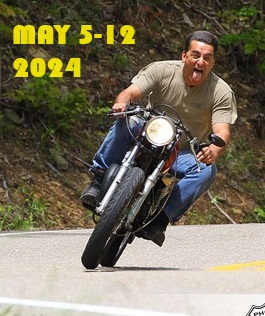- Welcome to 2 STROKE WORLD .net.
Recent posts
#1
eBay/FB Marketplace/Craigslist watch / Re: R5 in the MD for $650
Last post by SoCal250 - Today at 03:04:09 PMDefinitely seems worth it for only $650.
400 front end and I see some NOS dykes pistons and some boxes of rings there too.
Here's the ad info for reference, since I don't think it will be online for very long.
1972 R5 Yamaha 350cc street bike - $650 (Silver Spring)
1972 R5 Yamaha 350cc street bike (Not running) plus extra fairing and two Yamaha 350 parts/rebuildable engines. Frame had been powder coated, clean but for shock absorber. Project bike stored inside, you get clean title and rebuilt engine, ignition box issues remain. $650 for all, $600 for bike, cash only.
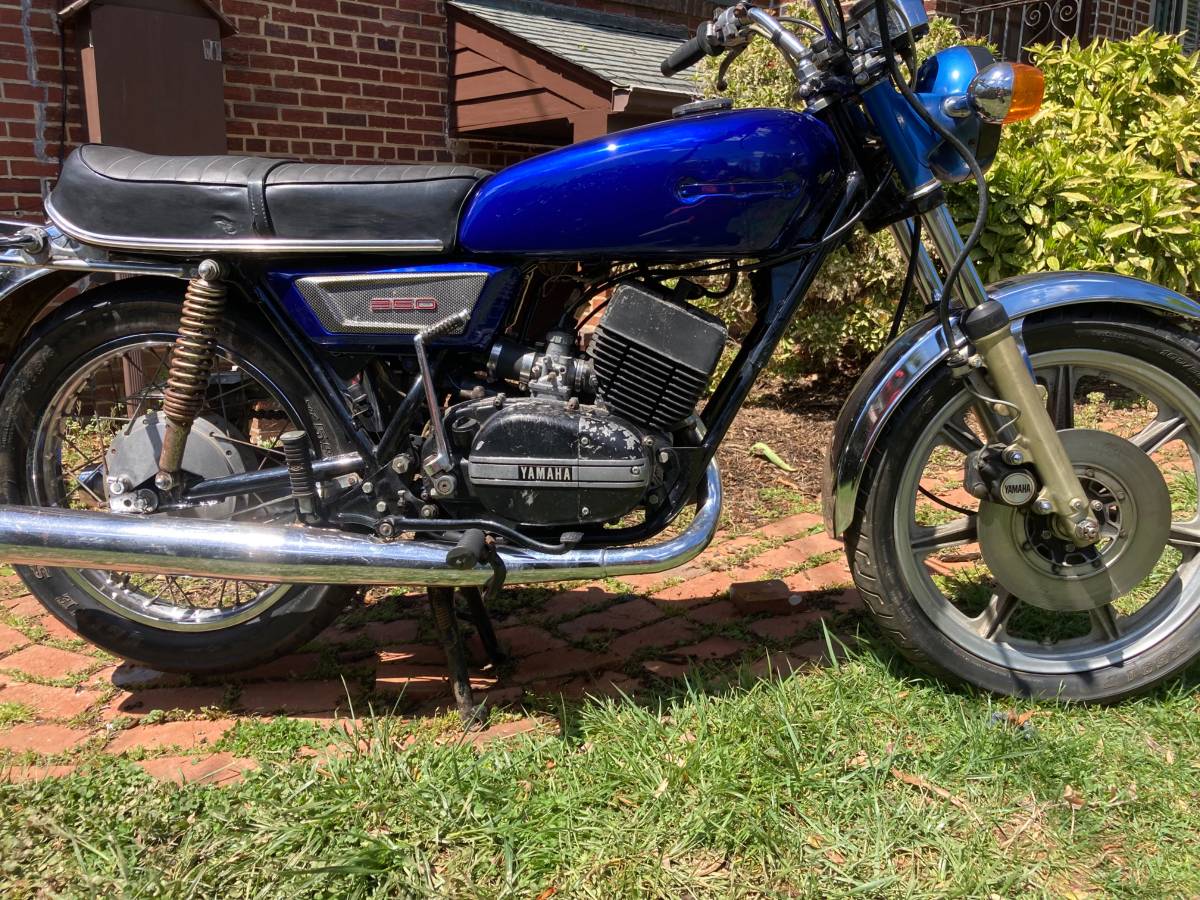
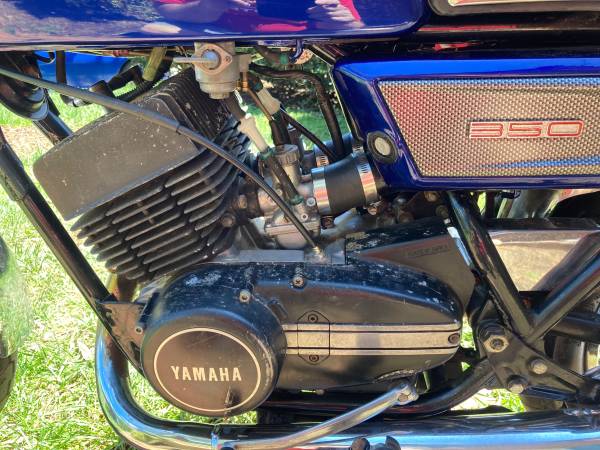
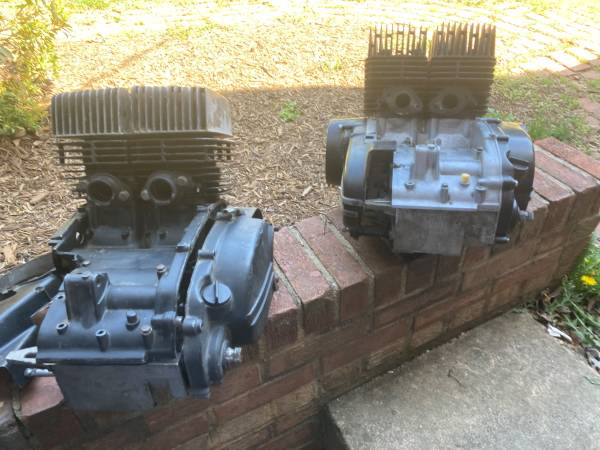
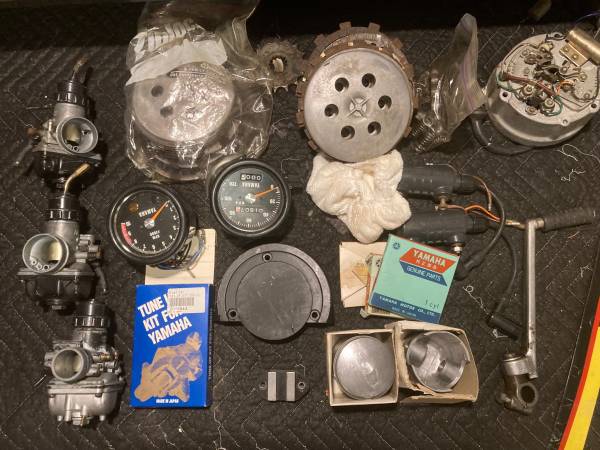
400 front end and I see some NOS dykes pistons and some boxes of rings there too.
Here's the ad info for reference, since I don't think it will be online for very long.
1972 R5 Yamaha 350cc street bike - $650 (Silver Spring)
1972 R5 Yamaha 350cc street bike (Not running) plus extra fairing and two Yamaha 350 parts/rebuildable engines. Frame had been powder coated, clean but for shock absorber. Project bike stored inside, you get clean title and rebuilt engine, ignition box issues remain. $650 for all, $600 for bike, cash only.
#2
eBay/FB Marketplace/Craigslist watch / R5 in the MD for $650
Last post by Guygrrr - Today at 02:11:07 PMNot mine. Looks like a really nice bike for very little money. Plus 2 spare engines.
https://washingtondc.craigslist.org/mld/mcy/d/silver-spring-1972-r5-yamaha-350cc/7744065768.html
https://washingtondc.craigslist.org/mld/mcy/d/silver-spring-1972-r5-yamaha-350cc/7744065768.html
#3
General Chatter / Re: Look what somebody did to ...
Last post by Yamanatic - Today at 02:01:06 PMThe 260mm DTLS was Yamaha's answer (at the time) to the TD2/TD3/TZ250 performance; what they had on production racers back in the late was OK for the TD1 series, but inadequate for the improved handling and speed of the 1970ish racers.
Yamaha had been playing with disk brakes back in the early 1960's, but they were inadequate. I had 2 sets of TD1 forks that were modified by Yamaha for Tony Murphy (I think the caliper was mechanical, the fork legs are all I had), and saw several photos of these early attempts on the track, but they needed something that worked on the newer racers, so they made the 260/DTLS.
No thanks to Japanese manufacturing, the OEM 260 brakes were prone to fade, spongy feel, and a lot of lever pressure due to very poor domestic shoe material back then. They were undoubtably superior to the TD1 DLS, but disk brake development and evolving technology prompted the move to putting disks on their race bikes by the mid 1970's.
Turn the clock up 30 years into the reproduction era, and with modern manufacturing techniques and vastly superior brake shoe compounds, the 260/DTLS works great! Yamaha had a sound design since reproductions match the original inside and out, and the 260 works great on the track - better than the Suzuki GT750 drum that ends up on many drum-brake class racers because of availability and being more affordable.
The brake I have is a 'Pender' Mfg. from the Philippines - Pender was the first and IMO the best, and he made and sold hundreds of these brakes over the 10 or so years he made them. The first one I bought worked so well on the track that I bought a 2nd knowing eventually it would go on another of my bikes. I don't race anymore, so a street bike it is!
Here is the Pender on a WERA raced TD3 - it worked great:

I swear by them, not at them!
Warren
Yamaha had been playing with disk brakes back in the early 1960's, but they were inadequate. I had 2 sets of TD1 forks that were modified by Yamaha for Tony Murphy (I think the caliper was mechanical, the fork legs are all I had), and saw several photos of these early attempts on the track, but they needed something that worked on the newer racers, so they made the 260/DTLS.
No thanks to Japanese manufacturing, the OEM 260 brakes were prone to fade, spongy feel, and a lot of lever pressure due to very poor domestic shoe material back then. They were undoubtably superior to the TD1 DLS, but disk brake development and evolving technology prompted the move to putting disks on their race bikes by the mid 1970's.
Turn the clock up 30 years into the reproduction era, and with modern manufacturing techniques and vastly superior brake shoe compounds, the 260/DTLS works great! Yamaha had a sound design since reproductions match the original inside and out, and the 260 works great on the track - better than the Suzuki GT750 drum that ends up on many drum-brake class racers because of availability and being more affordable.
The brake I have is a 'Pender' Mfg. from the Philippines - Pender was the first and IMO the best, and he made and sold hundreds of these brakes over the 10 or so years he made them. The first one I bought worked so well on the track that I bought a 2nd knowing eventually it would go on another of my bikes. I don't race anymore, so a street bike it is!
Here is the Pender on a WERA raced TD3 - it worked great:

I swear by them, not at them!
Warren
#4
Turning Wrenches / Re: 1980 RD 400G workshop Manu...
Last post by 604Paulb - Today at 11:51:08 AMI did a quick measurement on the forks and you're 100%. They are 34mm. I do have the correct swing arm for the G but will be ISO some 35mm forks. I have been looking into parts, looks like it might take some time to find a set to rebuild.
#5
Turning Wrenches / Re: 28mm Mikuni - What are the...
Last post by LMS - Today at 06:50:46 AMOn another note, you might want to think about getting pod filters that don't have the end caps.
#6
Events / Re: Donut Derelicts - May 04, ...
Last post by SoCal250 - May 05, 2024, 11:19:58 PMThis event takes place every Saturday morning, and has been going on for almost 40 years. It started with just a small group of friends meeting in a parking lot. https://www.donutderelicts.com/
Some pretty wild stuff shows up there and the lot gets packed.
Some pretty wild stuff shows up there and the lot gets packed.
#7
Turning Wrenches / Re: 28mm Mikuni - What are the...
Last post by SoCal250 - May 05, 2024, 11:14:53 PMJoe,
The two large upward angled nipples on the inboard side of the carbs are bowl vents. They were originally connected with a hose to the airbox. I just connect a short piece of hose to mine and let them hang down. Some people who are running a Y-boot instead of the stock airbox drill holes in the bottom of the boot, add nipples, and run hoses to them. A third option is you can remove the brass ball in the bottom of the bellmouth covering the airjet, clean the jet, then block off the vent tubes. Do not block the vent tubes unless the airjet has been unshrouded.
The two smaller nipples on the bottom of the bowls are fuel overflow for the float bowls.
The two large upward angled nipples on the inboard side of the carbs are bowl vents. They were originally connected with a hose to the airbox. I just connect a short piece of hose to mine and let them hang down. Some people who are running a Y-boot instead of the stock airbox drill holes in the bottom of the boot, add nipples, and run hoses to them. A third option is you can remove the brass ball in the bottom of the bellmouth covering the airjet, clean the jet, then block off the vent tubes. Do not block the vent tubes unless the airjet has been unshrouded.
The two smaller nipples on the bottom of the bowls are fuel overflow for the float bowls.
#8
Events / Re: Donut Derelicts - May 04, ...
Last post by busa1300 - May 05, 2024, 11:12:34 PMWish there were cool shows like that somewhere remotely close to me... only bike shows in my area are push rod related 

#9
Turning Wrenches / 28mm Mikuni - What are these l...
Last post by Joe6v6 - May 05, 2024, 09:10:22 PMI assume these are the stock carburetors,77 RD400, what are the inlets in the middle. Are they overflow for the float bowl? What are the other 2 smaller diameter inlets? Where should I run these lines to. Seems very difficult to find a diagram of all the lines that come off these carbs.
#10
eBay/FB Marketplace/Craigslist watch / 1979 Yamaha RD400 Daytona, NR ...
Last post by SoCal250 - May 05, 2024, 08:18:30 PM(not mine)
This Daytona sold on BaT a little over a year and a half ago for $9500, today it sold for $16,750! And it appears the seller made no changes and only put 30 miles on it.
And it appears the seller made no changes and only put 30 miles on it.
1979 Yamaha RD400F Daytona Special
https://bringatrailer.com/listing/1979-yamaha-rd400-daytona-special-10/
Sold for $16,750 on 5/5/24
This Daytona sold on BaT a little over a year and a half ago for $9500, today it sold for $16,750!
1979 Yamaha RD400F Daytona Special
https://bringatrailer.com/listing/1979-yamaha-rd400-daytona-special-10/
Sold for $16,750 on 5/5/24

